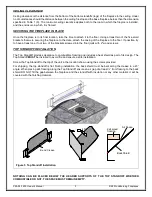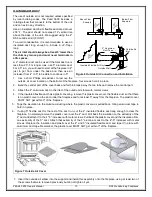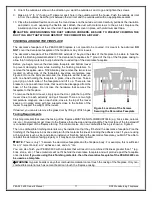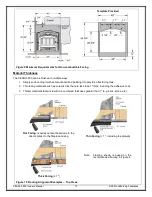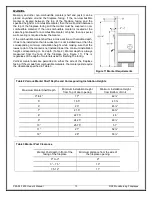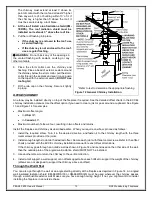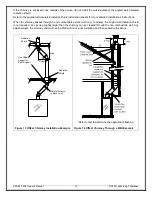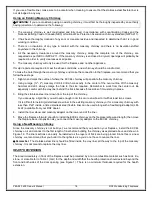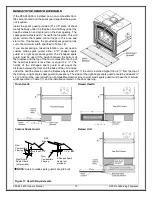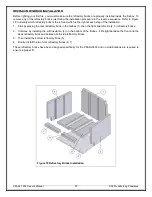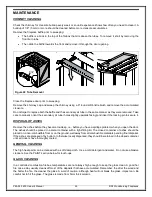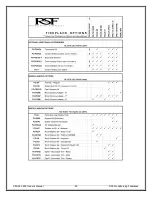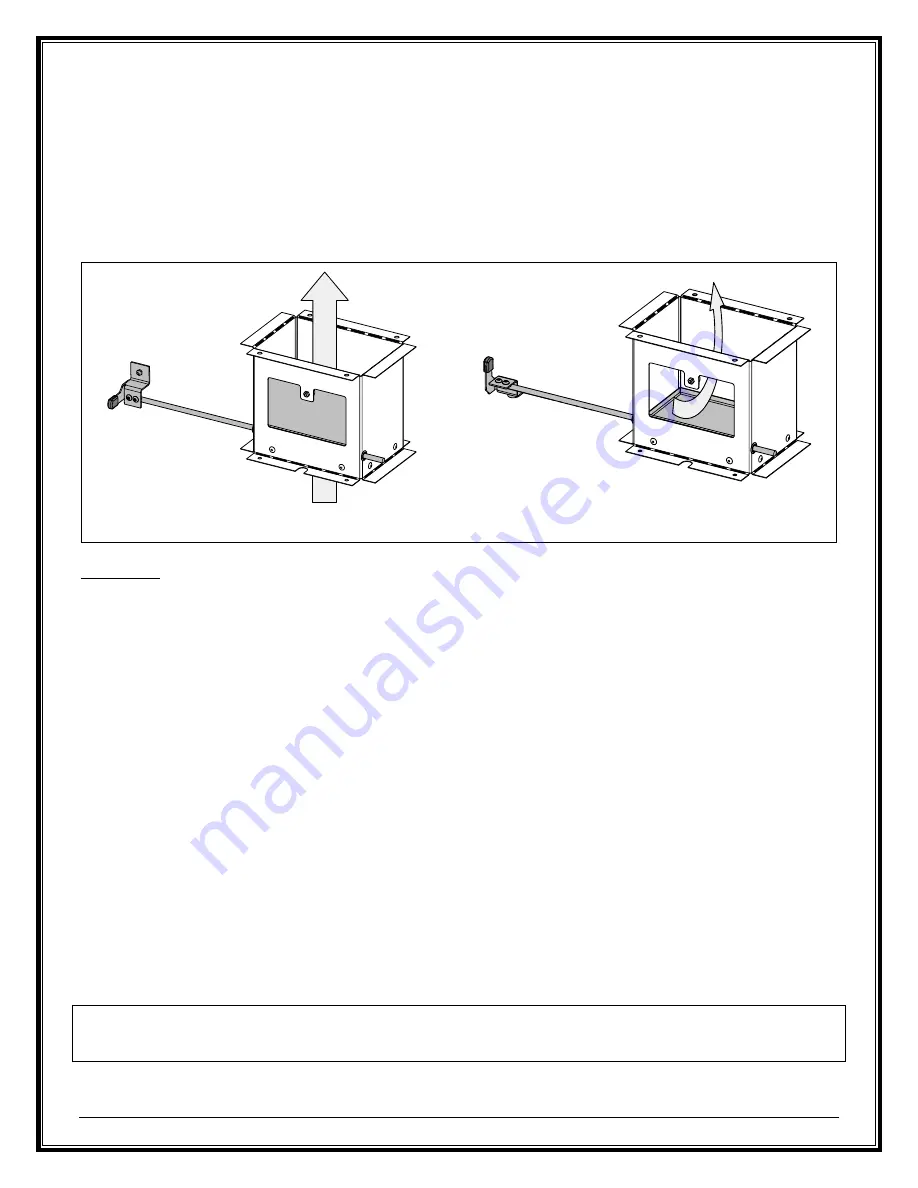
PEARL 3600 Owner's Manual
22
RSF Woodburning Fireplaces
If the fireplace is not connected to outside air, or it is not in use for an extended period (summertime) then it should
be in the Closed position.
To access the outside air control lever, first remove the bottom louver by pulling on it.
Rotating the outside air control lever so that it faces forward will open the outside air damper and allow fresh air into
fireplace. Because outside air is generally colder and denser it will help to start the fire. In some cases, fresh air will
help compensate for negative pressure problems within the house; however, it will not prevent the fireplace from
smoking in severely depressurized homes or inadequate draft situations.
It is recommended to use outside air for combustion, but you may choose to use room air for combustion instead.
To do so, turn the outside air control lever so it is pointing upwards to close the outside air damper. This control
should be closed to outside air when the fireplace isn’t burning to prevent cold air infiltration.
Figure 21 Outside Air Control Operation
LIGHTING
Ensure that the combustion air control lever is all the way in the open position. You will want as much air as possible
for the lighting process.
We recommend that you prepare your fire in a top-down fashion. This will make for a faster start and a cleaner burn
while starting. . Build your fire behind the front bricks to avoid spillage during reloading.
Start by laying 2-3 layers of small wood pieces (about 10 pieces of 1" to 2" in diameter). Criss-cross the pieces so
there is plenty of air circulation in between. Then continue by criss-crossing your kindling (about 20 pieces the size
of your fingers) on top of the small wood. You can then add a few pieces of paper on top.
Never use any flammable
liquid.
Light the fire at the top of the pile and close the door most of the way, but do not shut it completely. If the
door is positioned correctly you will see air rushing into the fireplace, this will help the lighting process. Wait about
2 minutes and then close the door completely. The fire should continue to burn. If it looks like it wants to smolder,
crack the door open for another minute or two before closing it again. The amount of time to keep the door slightly
ajar at startup is dependant on the height of your chimney and the outside temperature: the higher and the colder,
the longer the door needs to remains cracked.
Once most of the startup fuel is down to a nice coal bed, rake the hot coals towards the front and add cordwood
according to you needs, up to 6 logs at a time. Air enters the firebox at the front, and raking coals forward will help
your cordwood to light. The bottom layer of logs should be oriented front to back (i.e. North/South). The second
layer should then be oriented left to right. Always put at least 2 layers of logs criss-crossed together, this will help
them to light to burn cleanly. Again keep the door cracked for a couple of minutes while the bottom logs catch on
fire, then you can close the door completely.
Keep the combustion air control on maximum until the next reload. This will help establish a strong draft in the
chimney before you reduce the combustion air, ensuring a cleaner burn at the same time.
WARNING:
Do not use a grate or elevate the fire
.
WARNING:
Make sure to keep the fire behind the front step. Replace the logs if they fall against the glass.
Air F
lo
w
Open to outside air
Closed to room air
Closed to outside air
Open to room air


